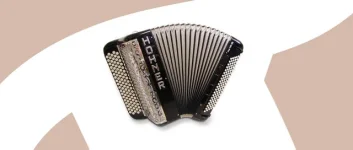There is no reason why a CBA can't be used to play TexMex style music. Or a PA, for that matter, I've seen both. All of the pitches/tones are there. Some searching on the Inet will reveal a Mexican guy playing a CBA, and quite competently as well, in the TexMex style (albeit a rarity).
I play CBA and worked on playing T/M on it as well. Somewhere along the way I got the brilliant idea that using the style accordion that most every T/M player uses might be a good idea. Going back and forth between a unisonoric and bisonoric instrument still presents some challenges (mostly with bellows technique), although I have found the use of a DBA to be advantageous. The bellows reversal on a DBA adds a certain kind of "hit" to some tunes. The neighboring 3rds are a big part of the equation. There are lots of them in T/M music and the DBA makes their use much easier, often requiring only a single, moveable, hand form.
Additionally, 99% of T/M instructional videos use a DBA. Learning on a CBA would require you to "translate" from a DBA layout to the CBA layout. This alone will complicate the learning curve. In the TexMex style, the bass side is rarely used due to conflicts with the traditional Bajo Sexto (basically a 12 string bass guitar) and notated music likely will not include any bass notation. It is a common practice for T/M players to completely remove the bass side reed blocks for the aforementioned reason. This practice both lightens the bass side, allowing for more rapid bellows movement, and allows the player to rapidly close the bellows by pressing multiple bass buttons at once, without producing any tones. Some T/M tunes require a faster closure of the bellows than can be achieved by the air release only. Many T/M tunes are composed in such a fashion as to use the enharmonic tones available on the other keyed rows. This is why you will find 3 row DBA's keyed in the fashion they are (Ex: GCF). A full scale can then be played on the draw only (or the push only). This cannot be done on a single row DBA, as playing a scale would require a repetitive in-out motion. Two rows help in this respect, but three rows seem to be an ideal combo. This layout (3 row) will reduce the number of accordions one must carry around to four, not twelve.
Accordions used in Celtic music are often keyed in Bb as that is the common bagpipe key, which cannot be changed to accommodate a different key signature. Everybody tunes to the bagpipes.
Another option would be a "club" style accordion, which can approach the capabilities of a CBA in a smaller, lighter box, due to being bisonoric in design. CAT may weigh in on these accordions as I have never played one. Go with the CBA if you want to, but I found the use of the DBA in TexMex music a better choice.
Press on.....
 I just received this lovely Hohner Fun Top 120 C System Chromatic Button Accordion. My favorite advantage of the CBA (Chromatic Button Accordion) is that these have a bigger note range than the Piano Accordion in a more compact body. I figured out since the 3rds are closer together, it would lend itself nicely to Tex Mex Music and even Mexican Music, this way you wouldn't have to carry 12 Diatonic Accordions. What would be really cool is if Hohner made Anacleto Latino Chromatic Button Accordions so that Accordionists could get into playing Tex Mex on a Chromatic Button Accordion like what Oscar Hernandez did.
I just received this lovely Hohner Fun Top 120 C System Chromatic Button Accordion. My favorite advantage of the CBA (Chromatic Button Accordion) is that these have a bigger note range than the Piano Accordion in a more compact body. I figured out since the 3rds are closer together, it would lend itself nicely to Tex Mex Music and even Mexican Music, this way you wouldn't have to carry 12 Diatonic Accordions. What would be really cool is if Hohner made Anacleto Latino Chromatic Button Accordions so that Accordionists could get into playing Tex Mex on a Chromatic Button Accordion like what Oscar Hernandez did.